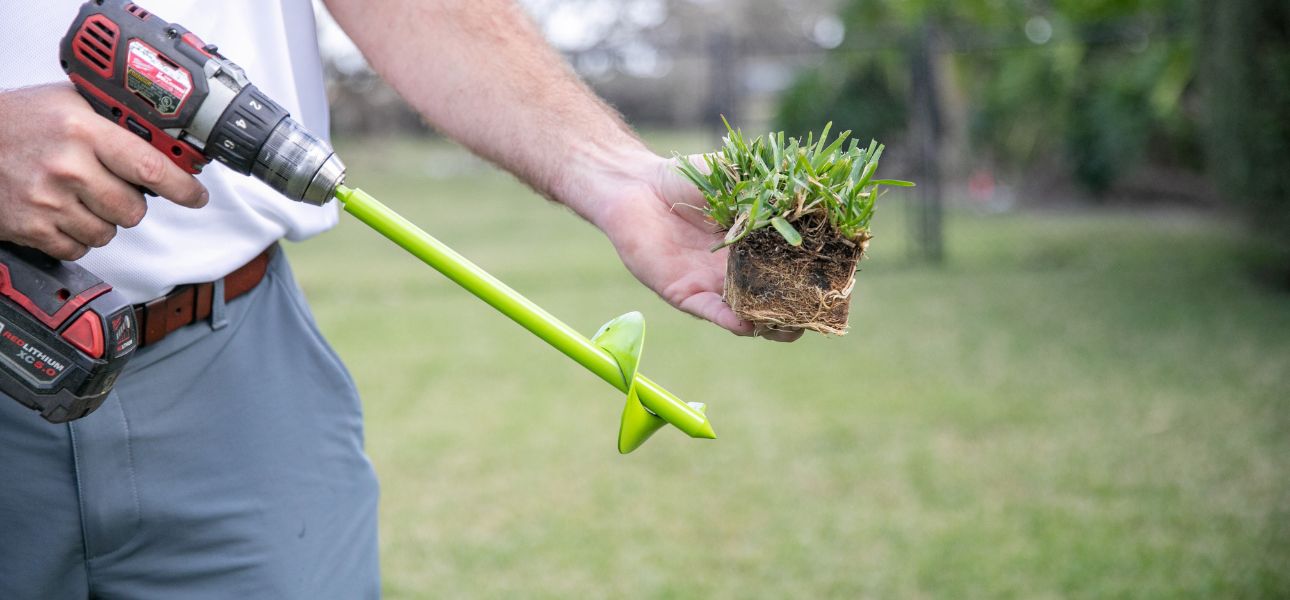9 Water-Saving Tips to Maintain Your Lawn

Maintaining a healthy lawn relies on providing its fundamental needs: food, sunlight, and water. These elements are essential in sustaining growth, making sure your grass thrives and your lawn remains resilient against environmental stresses.
While these elements are crucial, the rising emphasis on sustainability adds a new dimension to lawn care. Many homeowners now seek ways to maintain their lawns while considering the environmental impact of their practices.
One key aspect of sustainable lawn care is water conservation. By using water wisely, you can preserve this valuable resource while enjoying a lush, green lawn.

How to Conserve Water in Your Lawn
Strategies such as watering your lawn deeply but less often, planting drought-resistant grass varieties, and establishing a new lawn from grass plugs can help reduce water usage. This approach to lawn care benefits the environment and allows you to save on water bills. Read further as we elaborate on how to conserve water in lawn maintenance.
Watering your lawn deeply but less often and planting grass plugs are some ways to conserve water in lawn maintenance. Read more as we elaborate on these tips.
Avoid Overwatering: Overwatering not only wastes water but can also harm your grass by suffocating its roots and contributing to root rot and fungal diseases. Most warm-season grass varieties, such as Bermuda, Zoysia, and St. Augustine, thrive with about one inch of water per week, including rainfall.
Water Deeply But Less Often: This practice facilitates deeper root growth, which increases your lawn's heat and drought resistance. It is more effective than frequent, shallow watering, which can lead to shallow root systems.
Adjust Lawn Sprinkler: Place several tuna or cat food cans across your lawn and run the sprinklers for a set time. Measure how much water is collected in each tin can to gauge the average output of your sprinkler system. Based on that amount, adjust your watering schedule to ensure your lawn receives an adequate amount of water without overwatering.
Water Early in the Day: Water your lawn early in the morning when the temperatures are cooler and there is less wind. This allows the water to penetrate the soil and reach the roots effectively. Additionally, avoid watering during the peak heat of the day and in the evening so you don't keep the soil moist overnight, which may lead to fungal disease.

Avoid Watering Pavements: Adjust your sprinklers to avoid watering sidewalks or streets, directing the water to your lawn instead.
Skip Watering on Rainy Days: Avoid watering on cool, rainy, or windy days to prevent unnecessary water waste. Consider upgrading your sprinklers to smart irrigation systems with rain sensors that automatically shut off the system when it detects rainfall.
Mow at the Highest Recommended Height: Maintaining a higher mowing height, approximately 2.5 inches for many warm-season grasses, provides better shading for the soil. This reduces the exposure of bare soil to the sun and wind, which helps minimize evaporation and retain moisture.
Mulch Grass Clippings: Mulching helps retain soil moisture by reducing evaporation. It also acts as an insulating layer, keeping the soil cooler in summer. Additionally, as the clippings or any organic matter break down, they enrich the soil with nutrients, improving its soil structure and overall health.
Use Drought-Tolerant Grass: Warm-season grasses, particularly Bermuda grass plugs, are generally more tolerant to heat and drought than cool-season grasses. They establish deep grass roots that can access water deep in the soil, reducing the need for frequent watering. Their resilience allows them to stay green or green up quicker in dry conditions.

Establish a Drought-Resistant Lawn from Grass Plugs
Grass plugging provides an effective way to create a new lawn or fill bare patches while requiring less water during establishment than other methods. Although they require frequent watering initially to keep the soil moist and help the new grass adapt to its new environment, their overall water needs are still significantly lower due to being mature grass with deeper roots that can access water deep in the soil. Our SodPods® grass plugs guarantee fast establishment, leading to a healthy, drought-resistant lawn in a shorter period.
Overall, implementing proper lawn care practices and choosing grass plugs can help you conserve water in lawn maintenance while keeping your lawn in tip-top shape.
Ready to get started? Visit our website for more lawn care tips and to explore our wide range of grass plugs for sale.


